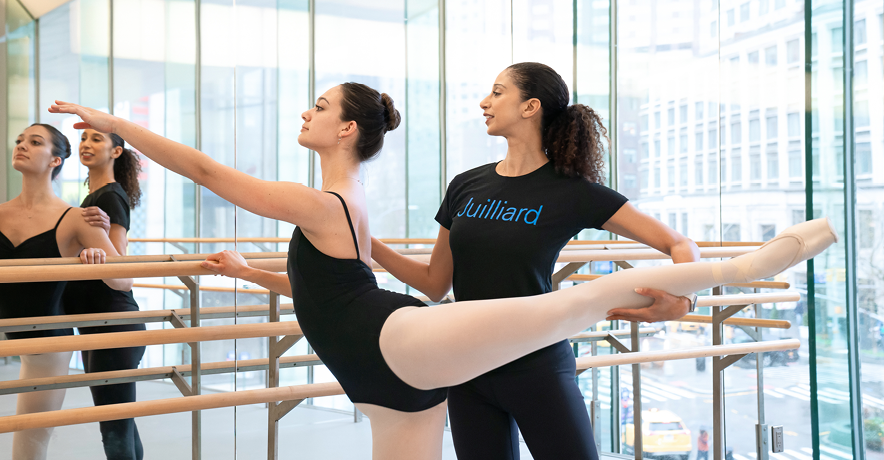Breaking Down Penché With Alicia Graf Mack
There is nothing quite as beautiful as a smooth and perfectly cantilevered penché.
“I love the idea of what penché represents,” says Alicia Graf Mack, dean and director of the dance division at The Juilliard School. “It is one of the largest iterations of a simple idea, which starts with a tendu to the back and then continues into this incredible, superhuman position.”
During her esteemed career with Dance Theatre of Harlem and Alvin Ailey American Dance Theater, Graf Mack was known for her long limbs and high extensions. “I loved adagio,” she says. “Penché allowed me to show the expansiveness of my body.” But while it’s easy to place value on creating a 180-degree split, Graf Mack says the integrity of your arabesque position should take precedence.
Below, Graf Mack discusses four tips for perfecting penché.
To Infinity and Beyond…
Graf Mack likes to use the word “attenuation” when describing penché. “Attenuation means you take a line and stretch it into infinity,” she says. “Finding that sense of attenuation in the body is really beautiful and important.”
This can start from your established arabesque line: Imagine that it extends out from the tip of your third finger on your extended hand and all the way out through your pointed toe. “Elongate that line into infinity so that it has no choice but to rise.”

Initiate From the Back Foot
A common mistake Graf Mack sees dancers make is to begin penché by first lowering the front arm and upper body. “Your back toe initiates the tipping,” says Graf Mack. This helps your back stay engaged and preserves your arabesque shape. Once you’ve reached the height of your penché, initiate its return by reaching through the front fingertips.
Respect Your Arabesque Line
Many dancers prioritize achieving a 6 o’clock split, but Graf Mack says that’s misguided. “Think of your arabesque as a Nike swoosh,” she says. “As you tip forward, maintain the integrity of that arch.” In other words, don’t let your body flatten out just to get your leg higher.

Stay square as you lower, too—allowing your back leg or torso to open creates an “à la sebesque” line and will be harder to control. Imagine achieving the penché within a narrow hallway, says Graf Mack. “Make sure the leg or body doesn’t flag out.” Staying square will also create more stability in the standing leg, which brings us to her next point…
Stay Placed Over the Standing Leg
Graf Mack often sees dancers sit back into their supporting heel and lose their pelvic placement as they tip forward—something she herself struggled with. “I am very hypermobile, so keeping my weight over my standing leg was always an issue, because it was so easy to pull back,” she says. “Especially in center.”

Instead, keep your standing leg engaged and your weight forward on your foot as you tip into penché. “Again, it is about prioritizing the integrity of your arabesque position over a 180-degree split.”








